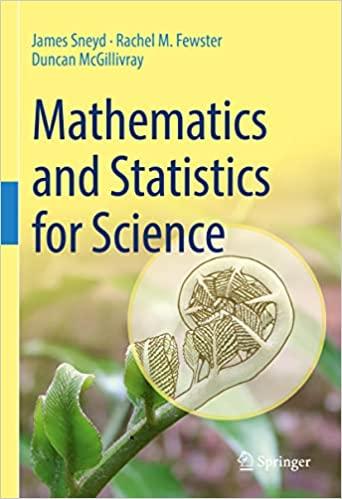Chromatography allows for the separation and quantification of complex mixtures, and depends on the fact that different
Question:
Chromatography allows for the separation and quantification of complex mixtures, and depends on the fact that different compounds adhere to a liquid with different strengths. For example, if you
(a) fill a tube with a stationary beads coated with some liquid,
(b) put some complex mixture in at one end of the tube, and
(c) force the mixture to move along the tube through the beads, then the different components of the mixture will adhere to the beads with different strengths and will thus move along the tube at different speeds. If you measure what comes out the far end of the tube, the different components of the mixture will appear at different times, and will thus be separated from one another. An example of this is shown in Fig. 24.6. The amount of each component of the mixture is determined by the area under the relevant peak.
The table on the left contains the points for the BZE peak, the table on the right contains the points for the cocaine peak.
a. Plot the data, and use these points to estimate the area under the BZE peak of the chromatogram.
This first peak, labelled BZE, corresponds to benzoylecgonine, the major metabolite of cocaine.
b. When you plot the data, you should notice that the second peak is chopped off, and doesn’t go all the way to zero; the norcocaine peak is interfering. This means that if we just use the trapezoid method to estimate the area under the cocaine peak we will underestimate the actual amount of cocaine in the sample. To get around this, find a function of the form s(t) = s0(t − 10)
2 e −k(t−10)
that provides a good approximation to the second peak. Do this by trial and error. Use your function to estimate the area under the cocaine peak.
c. Has this person also been drinking alcohol? How can you tell? (Do some online research to answer this.)
Step by Step Answer:

Mathematics And Statistics For Science
ISBN: 9783031053177
1st Edition
Authors: James Sneyd, Rachel M. Fewster, Duncan McGillivray





